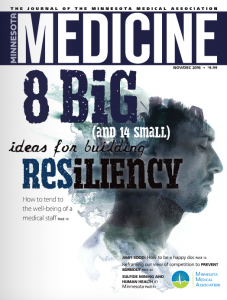
Published in the latest issue of Minnesota Medicine magazine, the official journal of the Minnesota Medical Association, the article highlights key health-related questions that should be asked when considering mine proposals. It also seeks to educate doctors who might need to care for people exposed to mining pollution.
The article was co-authored by Drs. Emily Onello, Jennifer Pearson, Deb Allert, Steve Bauer, Margaret Saracino, Kris Wegerson, John Ipsen, and Douglas Wendland.
“Sulfide mining has significant potential for the release of toxic chemicals into the environment,” the authors write. “These include a number of chemicals identified by the World Health Organization as being of major public health concern: arsenic, asbestos, cadmium, lead and mercury. Given this ominous list, and the possible synergistic effects of co-exposure to more than one of these chemicals, it is important that physicians understand why concerns are being raised about this type of mining.”
Providing a primer to physicians, the article outlines the chemical processes that produce dangerous pollution from the types of mines proposed by PolyMet and Twin Metals on the Superior National Forest.
The authors go on to describe some of the specific health threats, such as mercury poisoning from eating contaminated fish. Sulfates in mine runoff fuel a biochemical reaction that causes increased amounts of mercury in fish. The authors point out that rural residents catch and eat more fish than their urban and suburban counterparts, increasing their risk factor for consuming this harmful neurotoxin.
Other health threats include minerals in the ore that, when airborne, can act like asbestos, causing respiratory disease; dust; and air pollution from burning the large amount of coal that will be necessary to power mine processing plants.
The physicians also urge the state to protect worker safety by going beyond outdated federal regulations. All air contaminants except asbestos are based on science from more than 40 years ago. The authors point out that the National Institute of Occupational Health and Safety and the Occupational Safety and Health Administration both recommend allowing exposure of only 50 percent of the federal guidelines.
To better understand and manage the health impacts of mining, the authors recommend environmental review include two assessments provided by the Environmental Protection Agency. Health Risk Assessments and and Health Impact Assessments help regulators anticipate and reduce exposure to pollutants that are harmful to human health.

